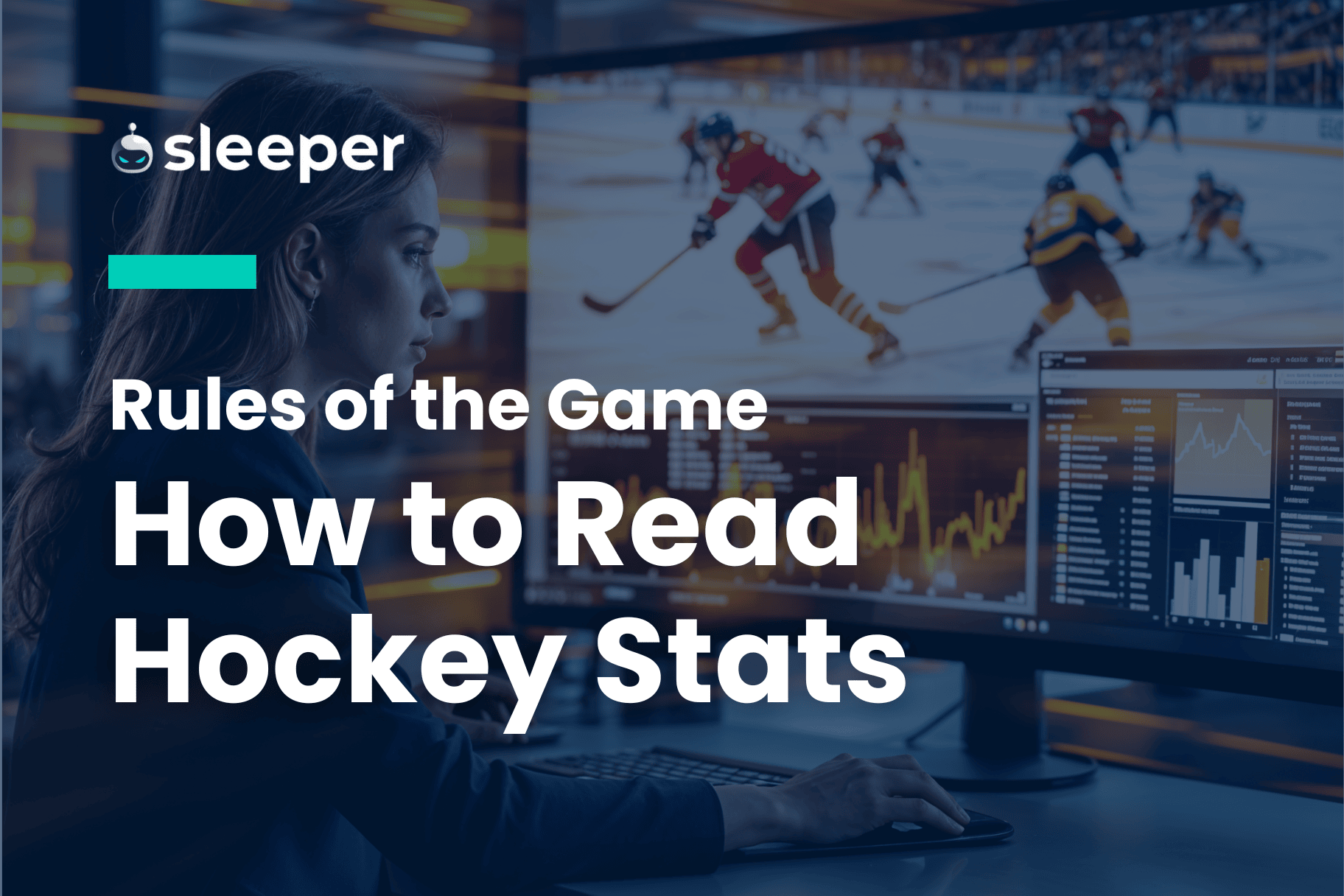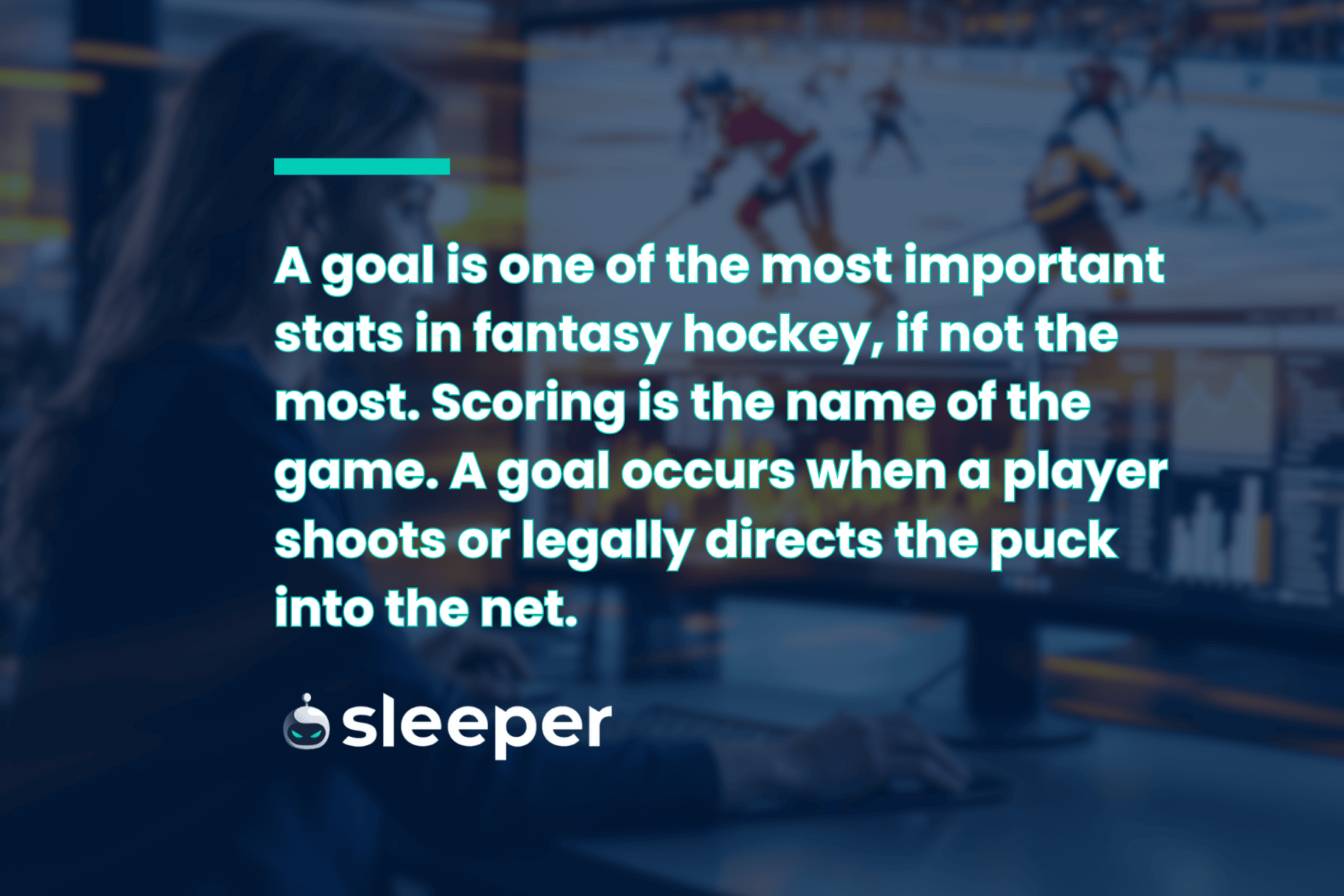Which hockey stats are important, what do they mean — and what do all of those acronyms stand for? Find out here and get comfortable on the ice.

Whether you are new to hockey or a seasoned fantasy hockey player, understanding statistics is crucial for enhancing your experience. Knowing how to optimize lineups and make strategic decisions based on player stats is essential.
This article will break down the key hockey statistics and explain how to interpret them and what they mean (and spell out their acronyms), in order to help you make informed decisions and improve your strategy.
NHL Stats: A Breakdown
POS - Position
The position is simply where that player plays on the ice. In ice hockey, this could be as simple as forward (F or FWD), defenseman (D) and goalie (G).
There are typically three forwards: one center (C) and two wingers (W), which can be further broken down into left wing (LW) and right wing (RW). Similarly, you may see left defenseman (LD) and right defenseman (RD) as well.
Related: Positions in Hockey
GP - Games Played
This statistic is how many games a player has played in. There are 82 regular-season games per year. You may also see games started (GS) for goalies.
SOG - Shots on Goal
Shots on goal counts how many times a player has shot the puck on net. Shot attempts that were blocked, missed the net or were going to miss the net but the goalie gloved down are not included in SOG.
S% - Shooting Percentage
A shooting percentage is how often a player scores on a shot on goal. It is calculated by dividing goals by shots on goal.
PIM - Penalties in Minutes
This stat shows how many penalty minutes a player has accrued in a certain time span. Minor penalties are two PIM and majors are five PIM.
PPG - Power Play Goals
Power play goals are when a player scores while the opposing team is shorthanded with a player in the penalty box. The best players on the team are typically on the power play to rack up PPG.
SHG - Shorthanded goal
A shorthanded goal is scored when a team has fewer players on the ice than its opposition due to a penalty. These are few and far between in the NHL, so players who score SHG should be valued.
OTG - Overtime goal
This refers to any goal scored in overtime.
GWG - Game-winning goal
A game-winning goal can occur at any time throughout a game. It is simply the goal scored that made the difference in a game. For example, if a team wins 5-2, whoever scored the third goal for that team is awarded a GWG.
ENG - Empty-net goal
An empty-net goal is when a player scores into the empty net after a team has pulled its goalie, which it will do while trying to desperately score late in a game it is trailing.
+/- - Plus/Minus
Plus/Minus is a calculation of how many goals a player has been on the ice for and against, but only at certain strengths. A goal scored on a power play does not count towards +/- but shorthanded goals do count for and against plus/minus.
FO - Faceoffs Taken
This stat is a total of how many faceoffs a centerman has taken.
FOW - Faceoffs Won
This is a count of how many faceoffs a player has won.
Hits
Hits are credited when a player checks another player in open ice or into the boards.
BLK - Blocked Shots
Skaters are credited with a blocked shot when they use their body or equipment to block a shot that would’ve hit the net.
Understanding Stats in Fantasy Hockey: Why They Matter
It’s important to understand the different stats in hockey in order to have success in your fantasy hockey league. Knowing the different stats gives you insight into how players are valued to make informed roster decisions for your fantasy hockey team.
G - Goals
A goal is one of the most important stats in fantasy hockey, if not the most. Scoring is the name of the game. A goal occurs when a player shoots or legally directs the puck into the net.

A - Assists
An assist is awarded to the player who touched the puck prior to the goalscorer. This can be via a pass, rebound or deflection.
PTS - Points
Points are a total of goals and assists. The players with the most points are typically known to be the best playmakers in the league, as they can both score and assist.
Plus/Minus - +/-
Getting players with a high +/- is key to winning your fantasy hockey league. You want players who are on the ice for more goals than they allow.
See also: What Is a Point in Hockey?
Frequently Asked Questions
What are hockey stats?
Hockey stats are records of how a player and team performed in a game, season, career or other time span. Compiling and referencing stats is key in knowing hockey history and who the best players are in today’s game.
Are hockey stats important in fantasy hockey?
Hockey stats are incredibly important in fantasy hockey. You need to know which stats are important in valuing players in order to construct the best lineup to win your fantasy hockey league.
Who are the NHL’s all-time leaders in goals, assists and points?
Trick question. The answer to all three is one player: Wayne Gretzky. There’s a reason he was called “The Great One.” Gretzky accumulated 2,857 points on 894 goals and 1,963 assists, all of which are NHL records.
Sleeper: Your Go-To Source for Hockey News
Understanding hockey stats is critically important for fantasy hockey and just enjoying the game. Now you should be able to have a strong understanding of what stats count for throughout the game.
Make sure you stay up to date with the latest news and hockey results on Sleeper. Sign up on the website or by downloading the app.




